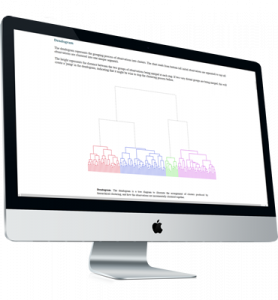
Panel data analysis
Get answers for the most frequently asked questions about the panel data analysis module. For a quick overview, we suggest you check the introductory video first.
Panel data analysis in a nutshell


Download the tutorial

To download the Enginius tutorial in pdf format: (1) Follow the link below. It will open an example data set, then (2) Click on the link in the upper-left corner of the screen.
Frequently asked questions
Yes. In addition to summarizing the fixed or random effects, the output provides coefficient estimates and associated t-statistics as in a simple regression model.
When it is statistically justifiable with respect to a specific data set, the random effects option is to be preferred because the estimates will have higher precision than those obtained from the fixed effects model option. However, the random effects model is based on a strong assumption, namely, the unobserved effects due to an entity are uncorrelated with the values of the other independent variables. The Hausman test is used to assess the validity of this assumption. On the other hand, if the random effects model is not justified, we use the fixed effects model (provided there are statistically significant differences between the estimated fixed effects associated with the entities). One disadvantage of the fixed effects specification is that we cannot include in the analysis independent variables that are entity-specific and do not vary across occasions for the same entity (e.g., gender of an individual, if the entity is an individual).
In a balanced panel, every entity is observed across the same number of occasions. While it is good to have balanced panel data to improve the quality of the estimates, the panel regression tool accommodates both balanced and unbalanced panels.
It is important to ensure that your data has the appropriate structure before you can run panel data analysis. You will need enough panel members (say, 5 or more), sufficient amount of data (say, at least 30 rows of data), one column of data to indicate each panel member’s ID, one column to indicate the occasion (replication) at which a panel member was measured, etc. The program uses several internal checks on the data before it will run the analysis to ensure that the results would be interpretable.



